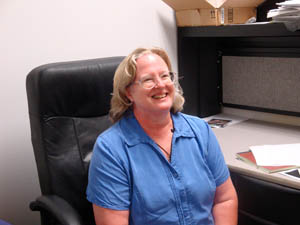Elizabeth Phillips moved to Maui in 2002 with her husband and two of her four sons. Currently she attends Maui Community College in pursuit of an A.S. degree in the Electronics and Computer Engineering Technology program. She plans to use her ECET degree along with her Bachelor’s degree in Physics to work in the technology field on Maui.
When she is not studying, she enjoys spending time with her husband, solving puzzles, gardening and doing needlework.
Institute when accepted: Maui Community College
Optimizing the Throughput of an Optical System Project Site: Textron Systems Mentor: Robert Nolan
Project Abstract:
The Air Force plans to develop active imaging ladar systems to support their mission of tracking and identifying dim space objects. Textron Systems has developed technology to specifically support this mission. The Laser Beam Director (LBD) transmitting telescope, found at the Maui Space Surveillance Site, is an important part of the Air Force’s mission because it is capable of projecting a laser beam into space, illuminating objects of interest. The LBD consists of 3 subsystems: a laser, telescope, and beam relay optics system. The beam relay optics system directs the laser beam from the laser to the LBD transmitting telescope and consists of several mirrors, two beam expanders, and a cube beam splitter. Our goal was to maximize the throughput of the beam relay optics system to increase the amount of light illuminating the object of interest. First, we measured the power of the light incident on an optical component (Power In) and transmitted through the component (Power Out) and then calculated the light throughput efficiency. The higher the light throughput efficiency of the component, the more light will be transmitted to the telescope for illumination of the object of interest. We explored the light throughput of the cube beam splitter, which splits the laser beam and sends a part of the incident beam to a camera. The light throughput efficiency of the cube beam splitter was 80%. The 20% of the incident light reflecting off the cube beam splitter was more light than the camera required, so we decided to explore the use of a pellicle in place of the cube beam splitter. The light throughput efficiency of the pellicle chosen was 94%. This pellicle would be an appropriate replacement for the cube beam splitter since 6% of the incident light was all that was required for the camera and the light throughput efficiency of the beam relay optics system would increase by 14%. Other components of the beam relay optics system will be explored as time permits.
